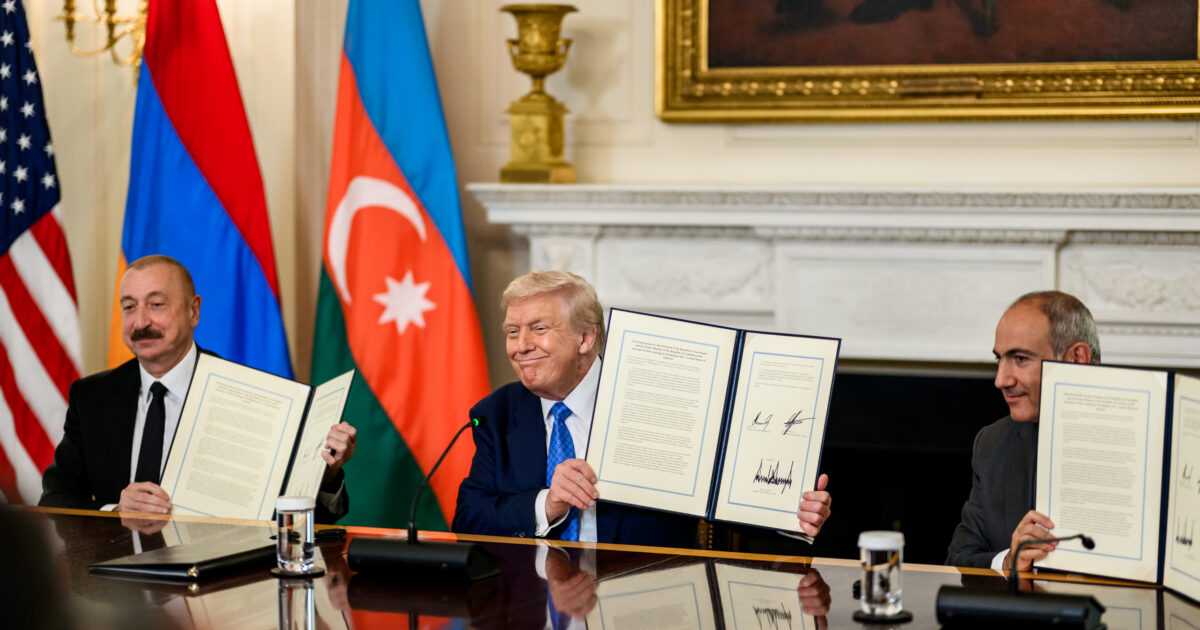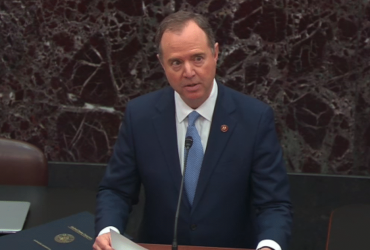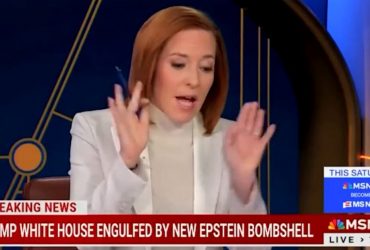By The White House – https://www.flickr.com/photos/202101414@N05/54708520574/, Public Domain, https://commons.wikimedia.org/w/index.php?curid=172017326
During his second administration, President Donald Trump has not only focused on securing the U.S. border and demanding improved trade terms with allies, but has also worked to negotiate peace deals and end conflicts. While the media has portrayed his foreign policy as a failure, evidence, including official statements from the previously-warring nations, shows he has been remarkably successful. Below is a rundown of the six conflicts President Trump has brought to an end.
The most recent success came on August 8, 2025, when Armenia and Azerbaijan signed a U.S.-brokered peace deal at the White House, ending a 35-year conflict over Nagorno-Karabakh. The dispute, dating back to Soviet times, had flared repeatedly, most recently in 2023 when Azerbaijan launched a decisive military campaign to reclaim territory internationally recognized as Azerbaijani but held by Armenia for decades.
While that campaign achieved Azerbaijan’s territorial goals, broader tensions persisted until the Trump administration identified a strategic opportunity to resolve the dispute, including the creation of a U.S.-administered transit route, the Trump Route for International Peace and Prosperity (TRIPP), through the Zangezur corridor.
Under the agreement, the United States holds exclusive development rights to the corridor for up to 99 years, a move with major geopolitical implications that also signaled a shift in regional influence away from Moscow. At the signing, both Azerbaijani President Ilham Aliyev and Armenian Prime Minister Nikol Pashinyan credited Trump’s mediation and announced they would nominate him for the Nobel Peace Prize.
In May 2025, India and Pakistan, both nuclear-armed, engaged in one of their most serious confrontations in recent years, with days of military strikes over Kashmir. The escalation ended on May 10, when a ceasefire was reached, committing both sides to halt all military action on land, in the air, and at sea. President Trump announced the agreement after what he described as a “long night” of U.S.-mediated talks.
Pakistani Prime Minister Shehbaz Sharif publicly thanked Trump for his “leadership and proactive role” in securing the truce, calling it decisive in preventing further escalation. While India disputed any U.S. role in the mediation, Pakistan’s acknowledgment confirmed that Trump’s intervention was significant to at least one of the belligerents, resulting in an immediate end to hostilities between the two nuclear powers.
In June 2025, Rwanda and the Democratic Republic of Congo signed a U.S.-brokered peace agreement at the White House, ending nearly three decades of conflict centered on eastern DRC. The war, fueled in part by the presence of the M23 militia, which controls large swaths of territory and is widely accused by the U.S. and others of receiving Rwandan support, has caused thousands of recent deaths and an estimated six million over its duration. On June 27, President Trump hosted both nations’ foreign ministers in the Oval Office for the formal signing, calling it “a glorious triumph for the cause of peace.”
The deal included commitments to respect borders, refrain from aggression, and coordinate on security, with a follow-up framework announced on August 1. It also opened the door for U.S. investment in eastern Congo’s critical mineral reserves, including gold, copper, and lithium. Both governments publicly acknowledged the U.S. role, with the high-profile White House ceremony underscoring Washington’s central place in the mediation.
In late July 2025, a territorial dispute between Cambodia and Thailand over 1,000-year-old Hindu temples along their shared border escalated into the deadliest fighting between the two nations in more than a decade. Clashes beginning July 24 killed dozens and displaced over 300,000 people.
On July 26, President Trump warned both governments that the U.S. would halt trade negotiations unless the fighting stopped, then personally spoke with their leaders. U.S.-backed talks began on July 28, the same day a ceasefire was announced, with both sides agreeing not to deploy additional troops to the contested area.
The truce took effect July 29, halting the violence and containing the displacement crisis. Thailand’s acting Prime Minister Phumtham publicly thanked Trump “from my heart” for pushing for peace, while Cambodia’s Prime Minister Hun Manet credited his “decisive mediation.” Reuters also noted that Trump’s trade leverage was key in bringing both sides to the table.
In June 2025, President Trump intervened to prevent a potential flare-up between Serbia and Kosovo, whose relations have been tense since Kosovo declared independence in 2008. Trump claimed Serbia was preparing for war, warning that the U.S. would halt trade if hostilities began.
Kosovo President Vjosa Osmani publicly credited U.S. mediation with “preventing possible escalation” from Serbia, directly linking Trump’s involvement to the outcome. Although Serbia denied having war plans, the threat was taken seriously enough for Kosovo to seek U.S. intervention. No escalation occurred after Trump’s warnings, marking a case of successful preventive diplomacy.
In June 2025, tensions between Israel and Iran erupted into open war after Israel launched surprise attacks on Iranian military and nuclear facilities on June 13, killing senior politicians, military leaders, and nuclear scientists. Iran retaliated with waves of missile and drone strikes on Israeli cities and military sites, triggering a 12-day conflict. On June 21, President Trump authorized U.S. airstrikes on three Iranian nuclear sites, Fordo, Isfahan, and Natanz, in what was described as the largest B-2 bomber operation in U.S. history. Working with Qatar, Trump then moved quickly to broker ceasefire talks, with experts noting that U.S. military involvement likely shortened the war compared to if Israel had acted alone.
A ceasefire agreement was reached on June 24, with Trump announcing, “It has been fully agreed by and between Israel and Iran that there will be a Complete and Total CEASEFIRE.” Although the truce was fragile and violations occurred in the hours before implementation, it brought an end to the fighting, even as questions remained about the extent of damage to Iran’s nuclear program.
Less than eight months into his second presidency, Trump has signed a massive trade deal with the EU, compelled NATO to increase defense spending, reduced illegal border crossings by 95 percent, and brokered peace deals. With more than three years remaining in his term, both America and the world could see even greater improvements ahead.
The post Media Downplays Trump’s Six Peace Deals Despite Warring Nations’ Confirmation appeared first on The Gateway Pundit.









